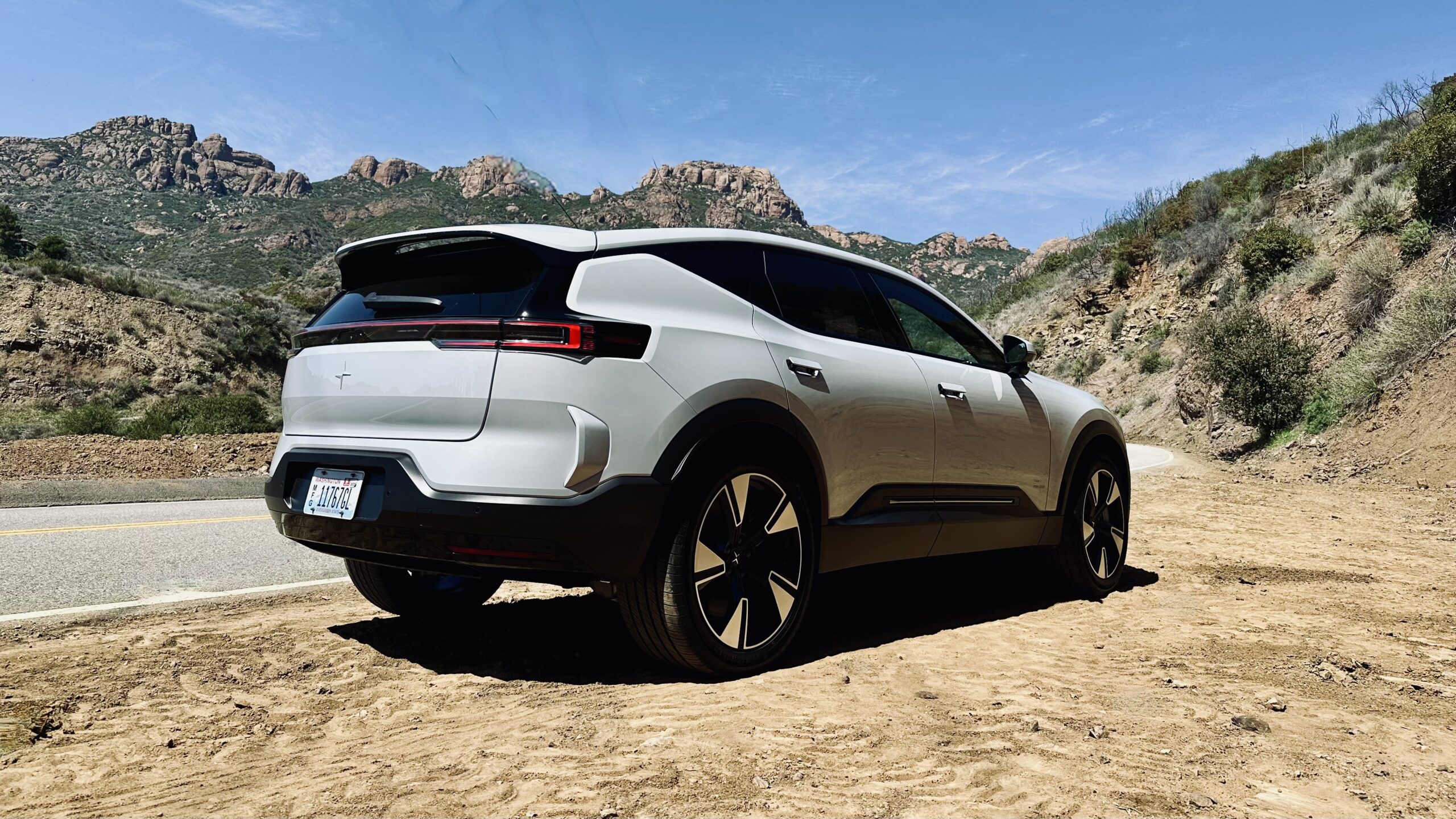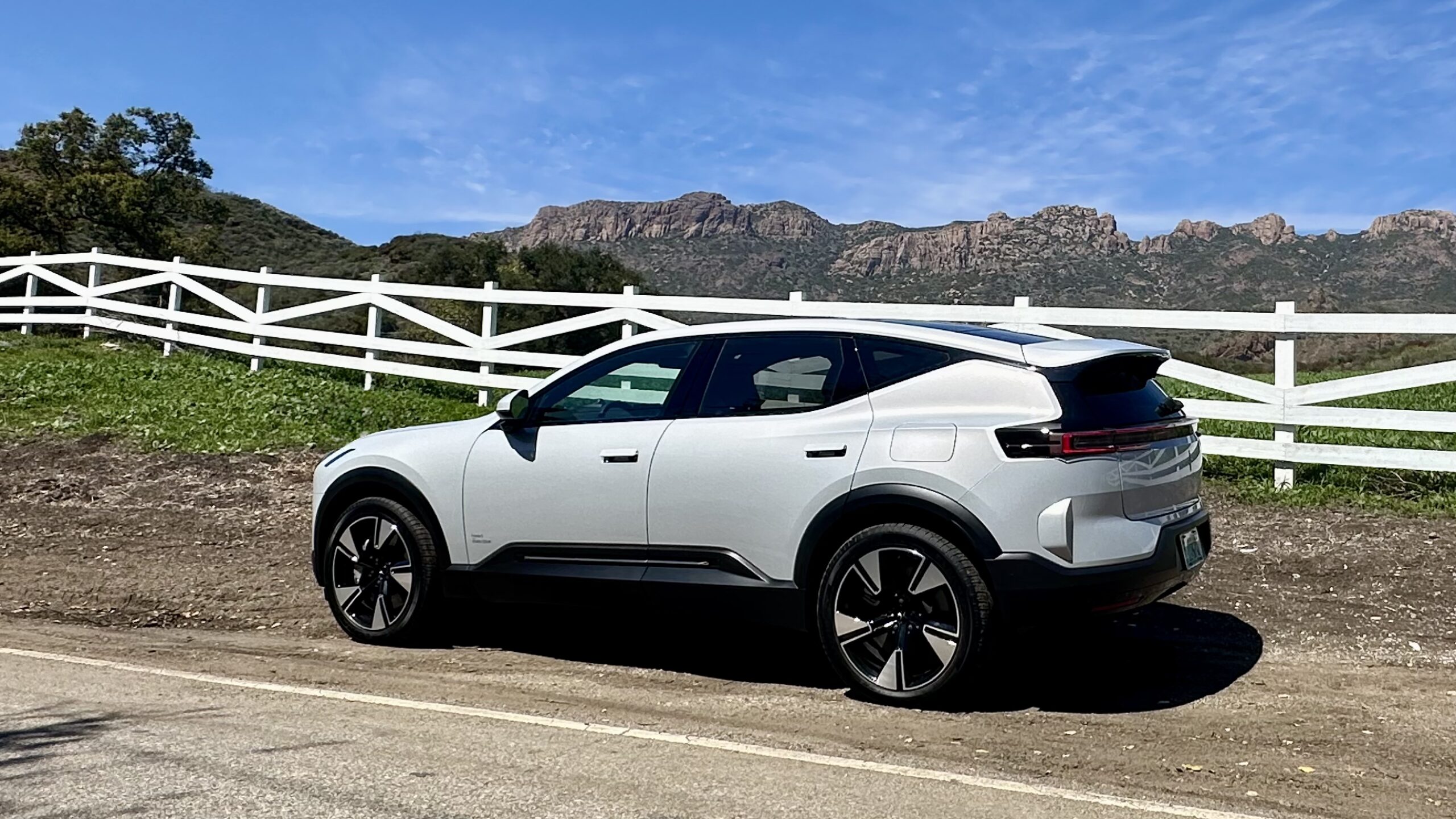
Polestar’s financial pulse may be thready, but it still turns out high quality electric vehicles, a short list of products led in the U.S. by the 2025 Polestar 3.
The two-row, five-seat midsize SUV boasts better-than-average range, lots of power, a spacious cabin, good looks and a premium price to match its premium features. It will be joined late this year or early next by a tall coupe, or SUV-coupe, version called the Polestar 4,
The Swedish EV maker, an offshoot of Volvo, is publicly traded but majority owned by China’s Zhejiang Geely Holding Group and Geely founder and CEO Li Shufu’s private PSD Investment. Volvo Cars – which in turn is owned by Geely – also holds a stake.
All that means that the company is exposed on numerous fronts to the tariffs that the Trump Administration says will force manufacturing of all sorts to return to the U.S. The jury’s out on that, but meantime tariffs typically result in increased costs of operation for foreign companies. And they inevitably pass those extra costs on to the customers in the form of higher prices.
For its part, Polestar already has moved production of Polestar 3 models to be sold in the U.S. to a plant in South Carolina that it shares with Volvo.
That doesn’t free the already pricey mid-size SUV of tariff-related cost hikes, though. More than half of its content is sourced in China and Sweden.
The president keeps altering the scope of the tariffs he’s imposed on imported goods, including auto parts, but whatever the final numbers come in at, Polestar will face materially increased costs. Even if all those bits and pieces, including the Polestar 3’s electric powertrain, could magically be made in the U.S. starting tomorrow, their cost would increase because of the higher cost of labor here.
End of geopolitical economics lesson.
Meantime, the 2025 Polestar 3, which went on sale late last year with a double-motor, all-wheel drive powertrain, now comes in a lower cost single-motor, rear-wheel drive variant that fills out the model year lineup.
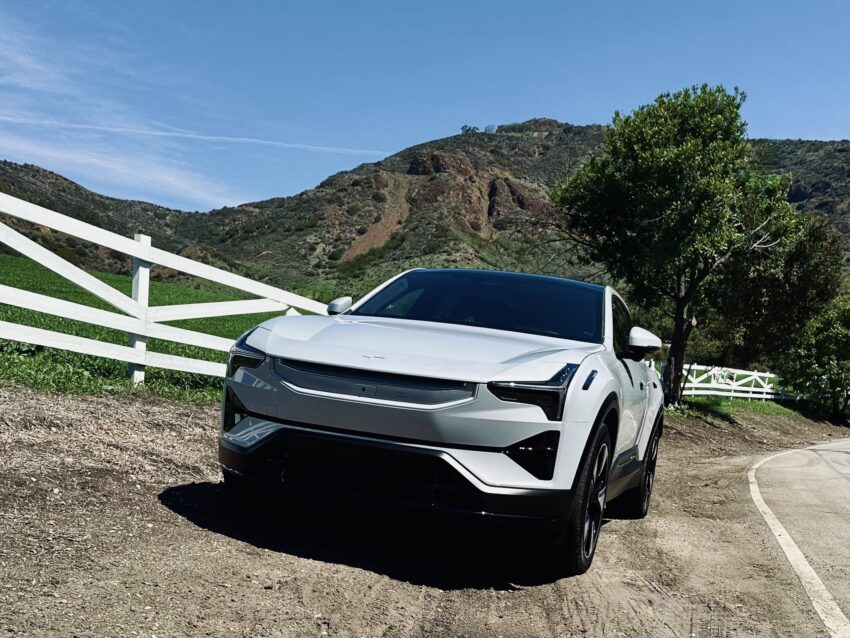
A Trio of Choices
In all, Polestar offers the Polestar 3 in three distinct flavors, all bearing the phrase “Long Range” as part of their identifiers – signaling, perhaps, plans for a shorter-range version in the future – a “3” with a smaller battery and lower cost.
The long-range single-motor version adds range – the EPA rating is up to 350 miles, versus 315 miles in the dual-motor models – but shaves poundage, power and price. (We’ll dive into range estimates in a bit).
It is rated at 299-hp and starts at $68,900 under pre-tariff pricing, a hefty $5,900 under the base dual-motor model. The single-motor 2025 Polestar 3 has its own powertrain and suspension but otherwise is almost identical in looks and features to the dual-motor trims.
The two long-range dual-motor variants – regular and performance – start at nearly $75,000 and can top $95,000 in the performance version with all options. The “regular” dual-motor Polestar 3 boasts a healthy 489 horsepower, the performance version boosts that to 517 ponies by dint of power management software adjustments.
Range Report
Unless you’re a real milquetoast on the accelerator pedal and pretty much avoid highways and freeways, don’t expect to consistently get the 350 miles per charge from the single motor variant that the EPA rating suggests. Real-world range for most EVs runs 10% to 15% below EPA estimates –the variance depends largely on tire size, the weight of cargo (including people) on board, driving style, terrain and the amount of high speed driving involved.
In in our range test of a single-motor Polestar 3 with 21-inch wheels – the variant the EPA rates at 350 miles – our ride through Southern California’s hilly inland San Diego County covered 250 miles. That included 140 miles of fast freeway driving in light traffic at an average speed of 69 mph, plus 70 miles of miles of ambling country lanes and 40 miles of sometimes steep mountain roads at a combined average speed of 47 mph.
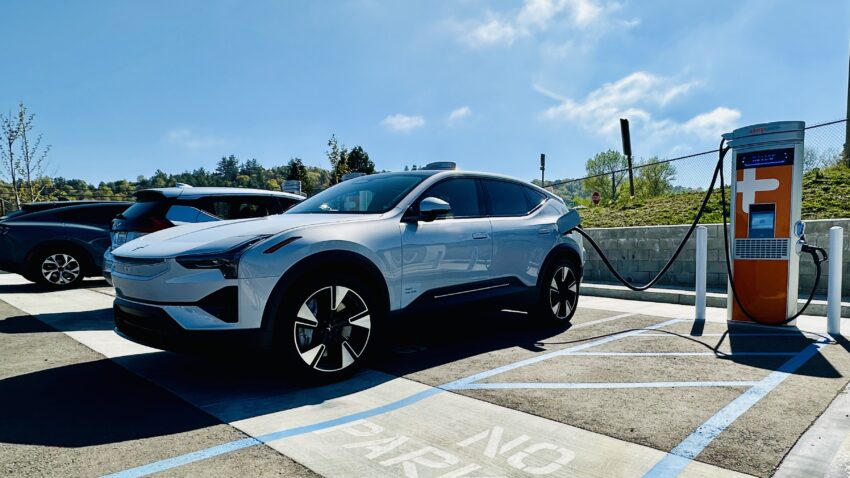
Per the EPA’s estimate, we should have been draining the battery pack at a rate of 3.27 miles per kilowatt-hour (350 miles/107 kWh of usable battery capacity = 3.27 mi. per kWh).
But the first half of the trip was uphill for most of the non-freeway driving and the Polestar 3 delivered just 2.4 miles per kWh, which would translate to total range of just under 266 miles had we kept going at that pace until the battery was drained. We benefited from a lot of downhill motoring on the way back, though, and improved efficiency for that part of the trip to a relatively thrifty 3 miles per kWh.
For the entire round trip, average consumption was 37.3 kWh per 100 miles. That’s the equivalent of 307 miles of range -12.2% less than the EPA estimate.
We tested the dual-motor performance version of the Polestar 3 last fall on rain-slicked roads in the area around Jackson, Wyoming. An abundance of caution with someone else’s vehicle kept speeds down – but we did climb about 2,200 feet from Jackson’s 6,240-foot elevation to hit the pass through the Tetons (aka the Middle Rockies) and into neighboring Idaho. Overall, we found real range on that trip was pretty much what the EPA estimated for the performance version.
Polestar Family Tree
While Polestar still isn’t all that familiar a name in the U.S., it has brought three models here, so far, and markets a fourth in Europe and Asia. It has at least three more in the works, although the economic and political climates being what they are these days, launch timing is pretty fluid.
The Polestar 4 tall coupe variant of the Polestar 3 already is on sale in Europe and Asia and, pending delays and/or cancellations brought on the Trump tariffs, is set to launch in the U.S. this fall. Polestar is planning to build U.S.-bound models in South Korea to avoid the hefty 100% tariffs on Chinese-made EVs already imposed during the Biden Admiration and now facing increase by the current White House occupant.
The company’s flagship model, the Polestar 5 sport sedan, is slated to follow that, likely in early 2026, with U.S. models built to be in South Carolina and/or South Korea.
There’s also a Polestar 7 compact SUV planned, to be followed – out of sequence -by the Polestar 6, a 2+2 roadster.
The company’s first offering was the Polestar 1, a limited production plug-in hybrid sport coupe with stunning lines and an industry-leading 52-mile all-electric range. It is no longer manufactured. The Polestar 2, a compact sporty all-electric sedan, was launched in 2021 but is no longer sold new in the U.S. because of the hefty tariffs on Chinese-built EVs .
The 2025 Polestar 3 competes in the premium-to-luxury performance SUV segment and is priced just a bit below rivals such as the Porsche Macan EV, Mercedes-Benz EQE SUV, BMW iX and the Volvo EX 90 (although Polestar says its corporate cousin appeals to a different crowd) .
Polestar 3 Trims and Pricing
The 2025 Polestar is available in long-range single-motor with rear-drive, dual motor with all-wheel drive and dual-motor performance with all-wheel drive versions.
All versions of the Polestar 3 are two-row, five-seat, electric crossovers. There’s lot of Volvo under the skin – Polestar was Volvo’s performance unit until it was spun off in 2015 to become an all-electric luxury-performance brand. But Polestar DNA is dominant in the 3’s design and chassis, suspension and powertrain development.

Special equipment packages for the Polestar 3 permit shoppers to create their own trim levels within the three powertrain tiers.
(Note: Polestar has been offering some tasty factory incentives for lease customers – $7,500 with an additional $5,000 for those trading in a Tesla. And those are on top of the $7,500 clean vehicles credit for all leased EVs, regardless of origin. There’s no telling how long those lease programs will last, though, and none of the incentives were being offered to purchasers at the time this was posted.)
Long Range Single-Motor
The rear-drive Polestar 3’s pre-tariff pricing starts at $68,900, including a $1,400 destination fee. It has its own powertrain and suspension but otherwise is almost identical in looks and features to the dual-motor trims.
Standard features include 20-inch alloy wheels, LED headlights; acoustic laminated windshield and rear window; auto-extending flush-mount door handles; power rear liftgate with foot sensor; power adjustable, heated, auto-dimming and folding frameless side mirrors; heated, power adjustable front seats with extendable thigh bolsters; ambient interior lighting; tri-zone, heat-pump based climate control system; Android Auto operating system for the 14.-5-inch infotainment center, with Google apps built-in; rear touchscreen for climate and seat heating controls, and a 10-speaker audio system.
For 2025 at least, the Pilot Pack of driver assistance features also is standard across the Polestar 23 lineup. It includes features such as lane-change assist, lane centering and lane keeping.
If your regular driving conditions don’t require all wheel drive and you don’t mind taking a couple of seconds longer to hit 60 from a standing stop, the single-motor version makes a lot of sense.
Dual-Motor
The dual-motor Polestar 3 starts at $74,800. It includes all the single-motor variant’s standard features and adds more power, electronic all-wheel drive and air suspension
Dual-Motor Performance
The dual motor AWD with Performance Pack jumps to $82,400 and includes everything on the standard dual motor but adds a performance software upgrade that boosts horsepower and torque. It also gets 22-inch alloys with performance tires, Brembo disc brakes, special chassis tuning, and gold-color seat belts, valve caps and brake calipers.
Options
Color
There’s a single standard exterior color – magnesium grey– and five optional color choices, all from Polestar’s rather muted palette. Dark blue, taupe, black and dark grey each are $1,300 extra and a bright white is priced at $1,600.
Upholstery
Standard upholstery is made of recycled polyester textile and renewable vinyl and comes only in charcoal with lower dash panel and door trim made of recycled plastic. Aluminum trim instead is a $500 extra, and a combo of charcoal woven wool (animal welfare certified) and “repurposed” aluminum is an $1,100 option.
Plus Pack
The Plus Pack, priced at $5,500, adds a head-up display, power adjustable steering column, soft-close door mechanism, heated rear seats and steering wheel, heated windshield wiper blades, a foldable cargo bay floor and a 25-speaker Bowers & Wilkins audio system with surround sound, Dolby Atmos capability and active road noise cancellation.
Nappa Leather
Available only with the Plus Pack at an additional $5,500 is a combination of animal welfare certified Nappa leather upholstery in three color choices with dark ash wood trim.
Pro Pack
A $2,100 Pro Pack option – not available on the performance version – adds specially designed 21-inch wheels, gold-colored valve caps, and black seat belts with a gold center stripe.
Battery and Performance
All Polestar 3 variants use a 107-kilowatt-hour battery pack (111 kWh gross capacity) installed under the floor in a so-called skateboard EV platform.
For the single-motor variant, the battery supplies a rear-mounted motor rated at 299 horsepower and 361 lb.-ft. of torque.
Dual-motor variants get an additional motor for the front axle. Combined, they produce a total of 489 horsepower and 620 pound-feet of torque. The Performance Pack boosts that to 517 hp and 671 lb.-ft.
Polstar says the standard dual-motor version can zoom from zero to 60 mpg in 4.9 seconds. Adding the Performance Pack cuts that to 4.6 seconds – at a cost of $2,000 per tenth of a second.
The single motor Polestar 3 get to 60 in a more leisurely but perfectly acceptable 7.5 seconds, per Polestar’s estimate. We didn’t do a timed 0-60 run in the single motor model we tested recently, but it seems a bit quicker that advertised.
Either way, there’s a lot of power, which is good because the Long-Range Dual Motor Polestar 3 weighs in at more than 2.5 tons in its lightest configuration and is just 120 pounds short of 3 tons at its heftiest. The single motor version is some 200 pounds lighter than the base dual-motor Polestar 3.
The single motor version gets steel coil springs, passive dampers and a rear motor without torque vectoring. Steering calibration is also a little softer in the single motor model. In our test drive we found it to deliver a comfortable ride and compliant handling, but its suspension couldn’t compensate for rough roads and high-speed corners and esses quite as well as does the dual moor variants’ more sophisticated system.
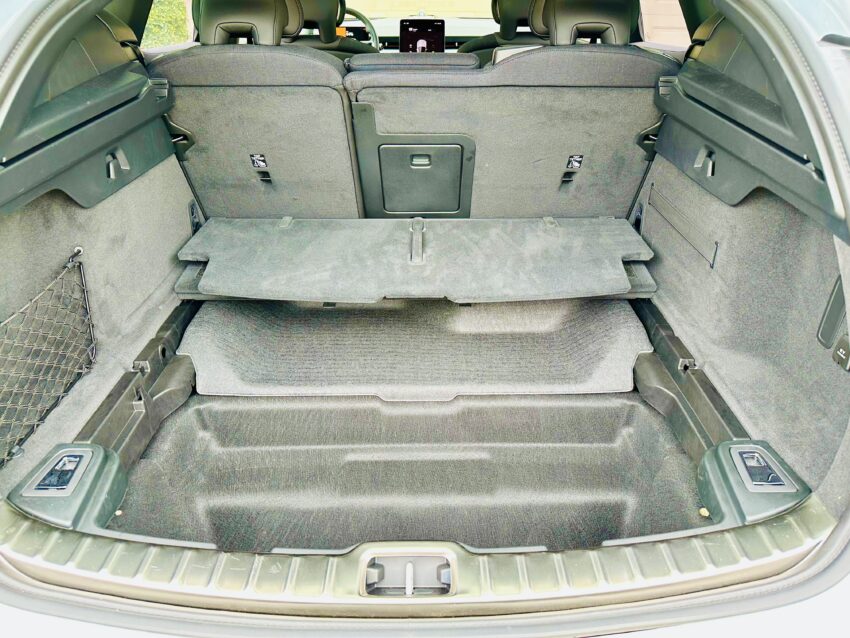
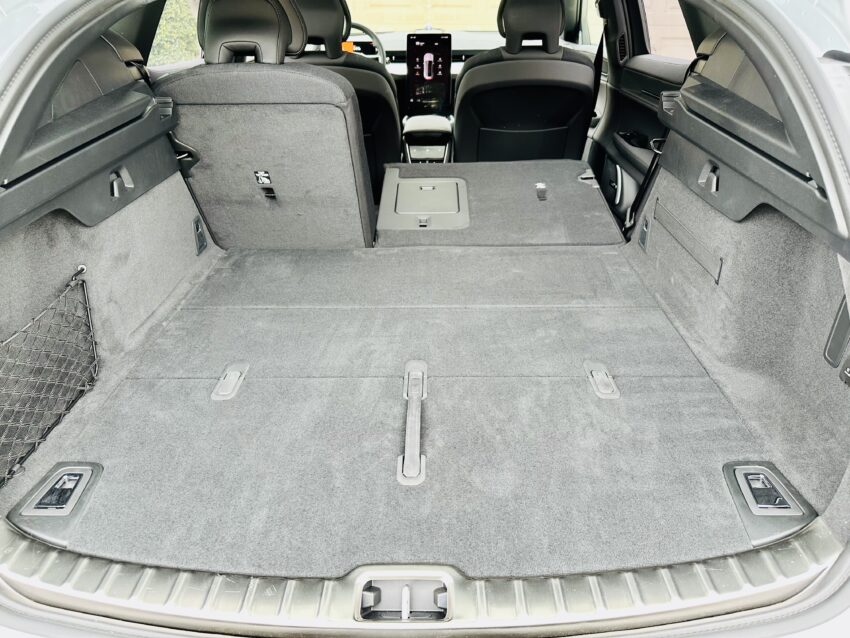
Dual motor Polestar 3s get adaptive air suspension and a rear-biased, electronic all-wheel drive system with torque vectoring that lets the Polestar 3 put its power to the road quite effectively and sure-footedly.
All versions get four-piston Brembo front brakes with single-piston Brembos in the rear. They handle the vehicle’s weight with aplomb. A one-pedal drive setting for the Polestar 3’s multi-stage regenerative braking reduces brake-foot fatigue in crowded traffic. It also serves like a downshift when turning or carving up a twisty country road.
We didn’t find either version of the Polestar 3 to be unwieldy or unbalanced when tossed around, but our preference was for the double-motor variants’ air springs and adaptive dampers.
Most people don’t buy largish electric SUVs for their drag-racing prowess, but for those who just must be first across the intersection when the light turns green, only BMW’s iX among the likeliest competitors is quicker from 0-60 than the dual-motor Polestar 3.
Range and Charging Time
The single motor Polestar 3 with optional 21-inch wheels and all-season tires is EPA-rated at up to 350 miles of range, dropping to 342 miles with the standard 20-inch tires and 333 miles with 22-inchers.
Dual-motor versions are rated at 315 miles with 21-inch wheels, 310 miles with the standard 20-inch wheels, and 287 miles with 22-inch wheels.
Adding the performance pack, up to 300 miles of range. Adding the Performance pack with its standard 22-inch alloys and sticky performance tires drops the range estimated to 279 miles.
While the smaller 20-inch tires should deliver less rolling resistance and thus more range than the 21-inchers, the 20-inch wheels are made of cast aluminum, which makes them heavier and thus slightly less energy efficient than the forged aluminum wheels used with the 21” rubber.
The Polestar can replenish its battery pack at a DC fast charger at up to 250 kilowatts per hour, good for a 10% to 80% recharge in 30 minutes.
For home charging, the Polestar, like its competitors, uses an 11 kW Level 2 charging system. With properly sized 240-volt equipment, the Polestar can take a battery from 10% to 100% in 11 hours.
Both DC and Level 2 charging speeds are competitive in the segment.
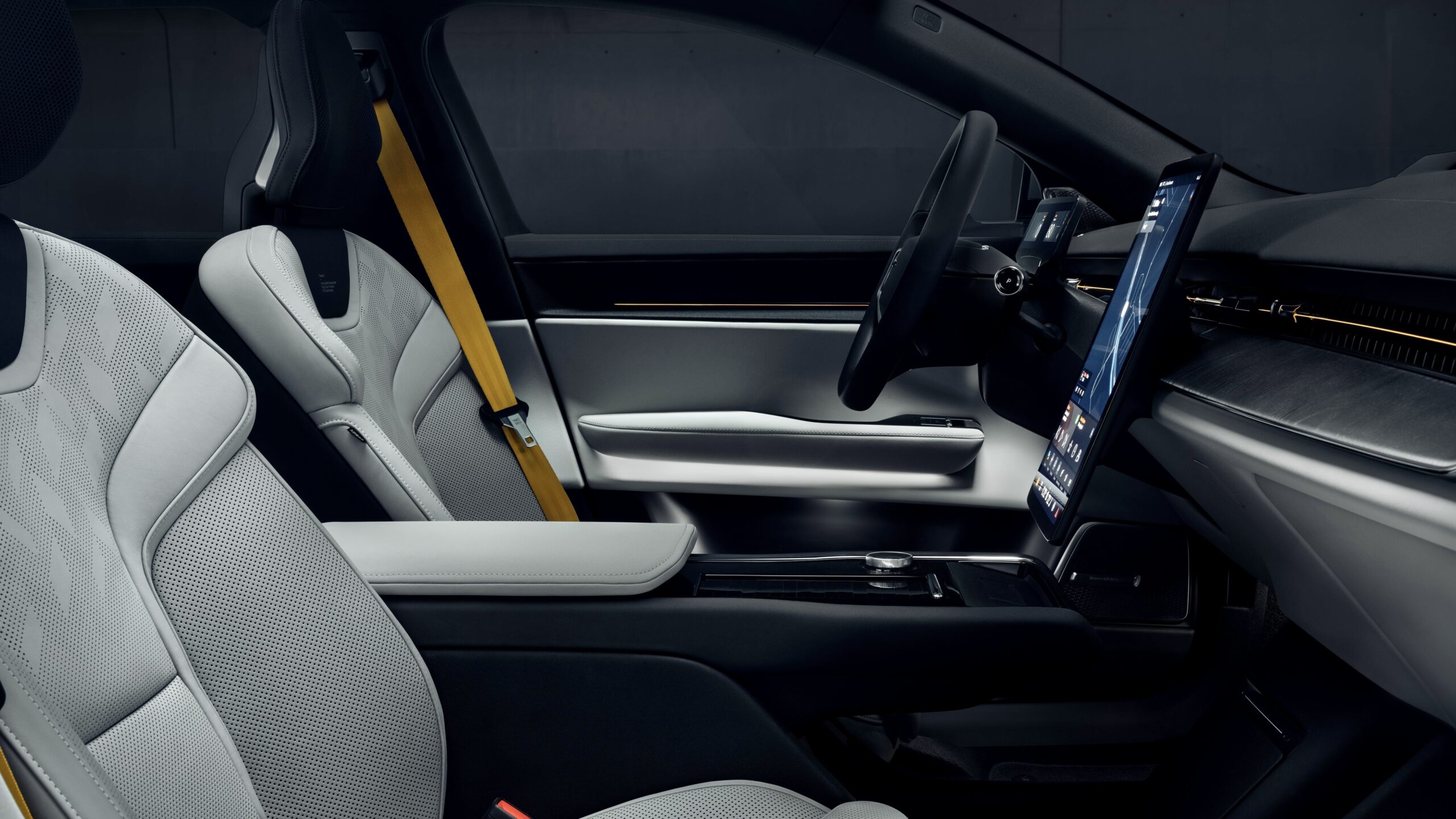
Inside the Polestar 3
The Polestar 3 has a Scandinavian minimalist interior that would have been avant-garde had it been rolled out a few years ago, before the Hyundai Motor Group set the standard for modern minimalist with its Hyundai and Kia small crossover interiors.
In the Polestar 3, the dashboard is divided into padded woven textile covered upper section with a textured plastic or optional aluminum or wood trimmed lower face, divided by a thin strip of LED lighting. The dash houses a 9-inch-wide digital driver information screen and a centrally mounted, vertically oriented 14.5-inch infotainment touchscreen that also serves as control center for almost all vehicle settings and functions. The only physical switches and knobs are vehicle function and driver display control buttons – unlabeled – on the steering wheel, the shifter and turn signal stalks on the steering column and a rotary controller for the audio system on the center console’s floating bridge.
Power-adjustable, sports-styled front bucket seats are set low to maximize headroom and are both supportive and comfortable. A panoramic glass roof is standard. It is glare-free and able to reflect the sun’s heat-causing short rays to keep the interior – and the glass surface – from becoming unbearably hot. A cloth sunshade is offered as an option, however. To further control interior temps, there’s a three-zone climate control system – driver, front passenger and rear passengers, with separate vents and controls for the rear seating areas. It uses a heat pump that draws far less energy from the battery than would a conventional electric heater.
The 60/40 split rear seat sits higher than the front seats for improved lines of sight for rear occupants, and the bench is divided into three molded seating positions. The middle position is narrow, but there’s no transmission hump and the batteries are mounted under the cabin, so the floor is flat, providing decent rear legroom even for center-seat occupants.
Cargo and Towing
The Polestar 3 has a small-for-the-segment primary cargo bay with just 17.1 cubic feet (15 grocery bags or five airline carry-ons) behinds the rear seats. The BMW iX has the largest primary cargo capacity, more than twice the Polestar’s, at 35.5 cubic feet. The Mercedes-Benz EQE SUV offers 20 cubic feet. Things improve when the Polestar 3’s rear seat back is folded down, boosting its total interior cargo capacity to 49.8 cubic feet. That’s still the least of the competitive set, though, with the iX’s 77.9 cubes of maximum interior cargo space taking the lead.
The Polestar 3 also has a 1.1 cu.-ft. storage area, or “frunk,” under the hood. It’s not large enough to be of much use but will hold a portable charging cord that otherwise would eat up open cargo space in the rear. Among likely competitors, the Audi Q8 e-tron has a 2.1-cu.-ft. frunk while the BMW iX and Mercedes EQE SUV do without.
Dual-motor versions can tow up to 3,500 pounds. That’s adequate for a small utility trailer but is less than the BMW iX’s 5,500 lbs. or the Audi Q8 e-tron’s 4,000-lb. rating. The Mercedes isn’t tow-rated in the U.S. The single-moor Polestar 3 is rated to tow up to 2,000 pounds. Polestar says the “3” also can haul up to 220 pounds on its roof.
Infotainment and Connectivity
Polestar was first with the Android Automotive operating system for infotainment centers – the “2” was the first production vehicle to use it. The Google-based system is standard on the Polestar3 as well and continues to be one of the most user-friendly interfaces around, especially for those who prefer voice commands, which are executed in everyday language after the “Hey Google” wake up call is uttered.
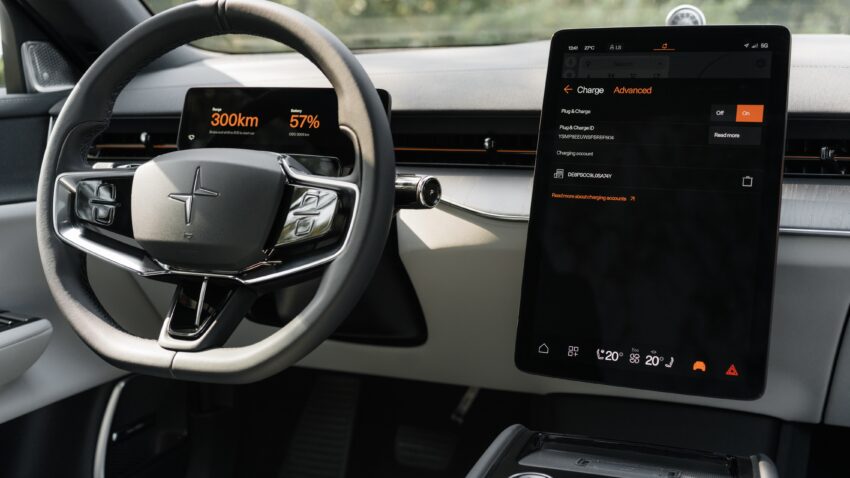
The built-in Google Play Store makes downloading new apps to the system. easy. There’s 5G connectivity available, along with Google Maps with a 3-year constant internet connectivity plan at no charge.
There are four USB-C ports – two for each seating row – and a 120-volt outlet in the rear cargo bay. Wireless phone and Bluetooth phone connectivity are standard as are Android Auto and Apple CarPlay compatibility.
If there’s a drawback to the Polestar infotainment setup it is that it also is control central for almost all the vehicle adjustments and functions, requiring drivers who like to adjust drive modes, cabin temperature and the like while underway to shift their eyes from road to screen far too often.
Audio is via 10-speaker system (a 25-speaker Bowers & Wilkins sound system with Dolby Atmos surround sound is an option). There are three external speakers as well, used to broadcast a warning tone at low speeds so that pedestrians, cyclists and others can hear the otherwise silent EV as its draws near.
Safety and the Polestar 3
As a new model on a new platform, the Polestar 3 hasn’t yet been crash-tested by the National Highway Traffic Safety Administration (NHTSA) or the nonprofit Insurance Institute for Highway Safety (IIHS). It did receive a 5-star safety rating in the European NCAP test, though, and we expect that, as a corporate cousin of safety-star Volvo, the Polestar would do well if tested.
The Polestar 3 is equipped with an impressive array of advanced safety and driver assistance technologies, all integrated via a centralized computer running on software developed by Volvo Cars. The driver assistance and safety systems use a variety of imaging systems to monitor external surroundings and conditions, monitor driver alertness and even report in-car movement to help prevent accidentally leaving pets or children in a parked car.
Standard safety and driver assist features on the 2025 Polestar 3 include front collision avoidance and mitigation with braking and steering assist plus pedestrian and cyclist detection, lane keeping and centering with lane departure warning, adaptive cruise control with full stop-and-go function, blind spot and rear cross traffic alert, rear collision mitigation and driver alertness monitoring.
A Few Final Thoughts
There are a few faster midsize electric SUVs in the premium and luxury classes. There are some that can be had for less money. But a few thousand dollars or tenths of a second, or both, really aren’t that important to most shoppers in those segments.
The Polestar 3 stands out to us for its unfussy good looks, user-friendly operating interface and a sporty ride that isn’t all that common in heavy electric SUVs. Its cargo bay isn’t as useful as some because of the rearward sloping roof, but you don’t see many $80,00 SUVs, electric or not, hauling upright credenzas these days.
We certainly hope Polestar’s challenges – it has lost money every year since it was spun off from Volvo, had to delay production of the “3” for almost a year because of software issues and hasn’t yet managed to achieve widespread name recognition in the U.S. – don’t prove fatal. Its vehicles are world-class EVs. The Polestar 3 belongs on any serious premium performance SUV shopper’s must-test list.
